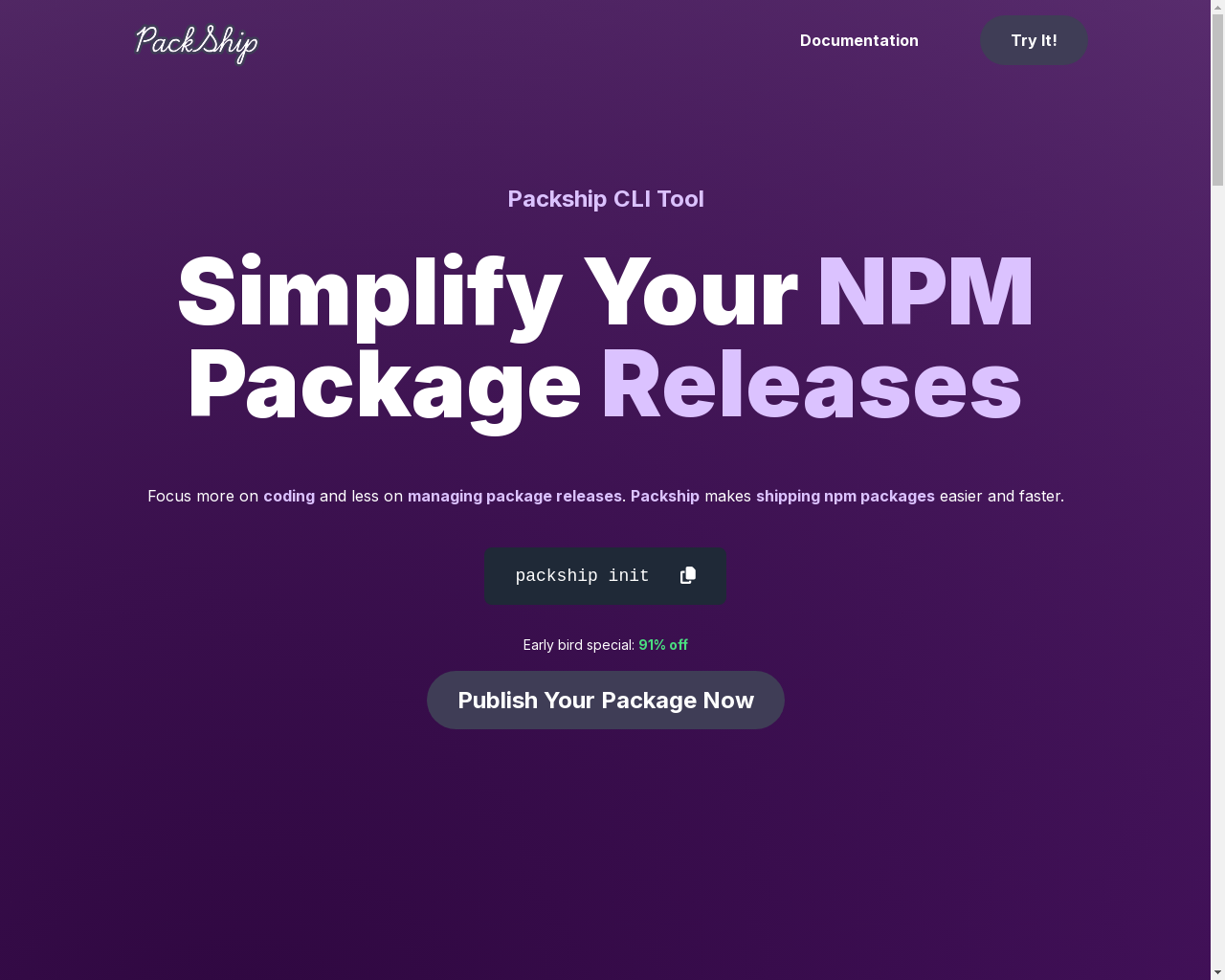

Highlight 1
It significantly speeds up the NPM package creation process, enabling developers to focus more on coding rather than setup.
Highlight 2
The boilerplate offers a comprehensive and standard file structure, making it easy for developers to follow best practices.
Highlight 3
Built-in scripts for testing, linting, and publishing help automate repetitive tasks, which contributes to a smoother workflow.

Improvement 1
The documentation could be more detailed, providing clearer examples and use cases to help new users understand how to fully utilize the boilerplate.
Improvement 2
A visual demo or walkthrough could enhance the onboarding process, giving users a better idea of how to interact with the package.
Improvement 3
Implementing more customizable options for package development could cater to advanced users who may have specific requirements.
Product Functionality
Consider adding more customizable templates and configurations to accommodate various project needs and preferences.
UI & UX
Enhance the user interface with a more modern design and interactive elements to improve the overall user experience.
SEO or Marketing
Implement a blog or content marketing strategy to educate potential users on the benefits of using PackShip and share success stories.
MultiLanguage Support
Introduce support for multiple languages to reach a broader audience of developers around the world.
- 1
What is PackShip?
PackShip is an NPM package boilerplate that simplifies the creation and publishing process for NPM packages.
- 2
How does PackShip improve the package creation process?
It automates common tasks, provides a standardized structure, and includes built-in scripts for testing and publishing, allowing developers to focus on writing code.
- 3
Is there documentation available for using PackShip?
Yes, documentation is provided, but it may benefit from further detail and examples for better understanding.
